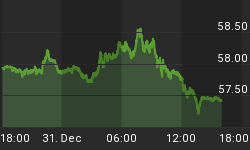10/25/2010 8:56:09 AM
The Semiconductor Index leads the equities markets higher after sucking in the bears the previous session.
Recommendation:
Take no action.
Daily Trend Indications:

- Positions indicated as Green are Long positions and those indicated as Red are short positions.
- The State of the Market is used to determine how you should trade. A trending market can ignore support and resistance levels and maintain its direction longer than most traders think it will.
- The BIAS is used to determine how aggressive or defensive you should be with a position. If the BIAS is Bullish but the market is in a Trading state, you might enter a short trade to take advantage of a reversal off of resistance. The BIAS tells you to exit that trade on "weaker" signals than you might otherwise trade on as the market is predisposed to move in the direction of BIAS.
- At Risk is generally neutral represented by "-". When it is "Bullish" or "Bearish" it warns of a potential change in the BIAS.
- The Moving Averages are noted as they are important signposts used by the Chartists community in determining the relative health of the markets.
Current ETF positions are:
Short DIA at $108.57
Short QQQQ at $49.66
Short SPY at $114.82
Daily Trading Action
The major index ETFs opened modestly higher and then moved higher in the first fifteen minutes then lower during the next fifteen minutes. The Dow traded flat to lower through the day, the S&P-500 traded flat, and the NASDAQ-100 moved higher through the session. The final fifteen minutes saw buying in all three to allow a mixed close with the Dow losing fourteen points, the S&P-500 gaining most of three points, and the NASDAQ-100 gaining fourteen points. The Russell-2000 (IWM 70.32 +0.45) posted a fractional gain and the Semiconductor Index (SOX 356.94 +7.08) finished two percent higher, leading all the equity indexes that we regularly monitor and moving back definitively above its 200-Day Moving Average (DMA). The bank indexes managed positive closes but were mostly unchanged with the Bank Index (KBE 22.81 +0.4) moving up as much as the Regional Bank Index (KRE 23.18 +0.04) moved lower. The 20+ Yr Bonds (TLT 101.38 +0.68) was able to manage a fractional gain avoiding its recent intraday low at $99.90. NYSE volume was anemic with just 771M shares traded. NASDAQ volume was also anemic with just 1,619B shares traded.
There were no economic reports of interest released. Instead, trading volumes were lackluster with the major index ETFs trading half of their regular volume.
The U.S. dollar finished flat ahead of the G-20 meeting over the weekend. Although some of the language was stronger and it was agreed that some developing nations would get a stronger voice at the IMF, nothing with any teeth in it was accomplished. The Rhetoric was that nations with account surpluses will whittle them down by letting their currencies rise to enable nations running current account deficits to become more competitive in global trade. This has caused the U.S. dollar to fall over the weekend.
Seven out of ten economic sectors in the S&P-500 moved higher led by Energy (+0.7%), Tech (+0.6%), and Consumer Discretionary (+0.5%). Utilities (-0.6%), Materials (-0.6%), and Telecom (-0.3%) moved lower.
Implied volatility for the S&P-500 (VIX 18.78 -0.49) fell another two and a half percent while implied volatility for the NASDAQ-100 (VXN 20.42 -0.76) fell nearly four percent. Both closed at/near their October closing lows but are still far from the level of the lows seen last April, when both were below the 16 level.
The yield for the 10-year note rose three basis points to close at 2.56. The price of the near term futures contract for a barrel of crude oil rose $1.13 to close at $81.69.
Market internals were positive with advancers leading decliners 3:2 on the NYSE and by 7:4 on the NASDAQ. Up volume led down volume 3:1 on the NYSE and by 3:2 on the NASDAQ. The index put/call ratio fell -0.17 to close at 1.12. The equity put/call ratio fell -0.03 to close at 0.69.
Commentary:
Friday saw a mixed close overall as the headlines were about the Dow closing lower. However, the real drivers of the market showed the semiconductors, the Russell-2000, and the NASDAQ-100 all press higher. Even the bank indexes managed positive closes (well, just barely). The fly in the ointment for the bullish case is that bonds are also moving higher.
The U.S. dollar is a powerful factor in the movement for U.S. equities. While earnings have been stellar (with 85% of reporting companies in the S&P-500 beating earnings estimates), much of this was anticipated. Top lines have been suffering as the smaller pie available has meant most companies have been improving profitability by cutting costs while their revenues are lower than a year or two ago. We expect the U.S. dollar bearish trade to eventually break and with the crowd that is currently participating, this trade will likely unwind rapidly which will cause a large move lower for the major U.S. equity indexes. However, patience is required here.
Looking at the trading action, while the Dow struggled Friday, the other equity indexes were able to post gains, although none in spectacular fashion with the exception of the semiconductor index. The market is really somewhat unpredictable with a gradual rise likely until a significant catalyst occurs. What that will be is uncertain at this time. The Fed doesn't release its policy statement until the day after the elections. The initial third quarter GDP numbers will be released this Friday, and the market is likely to be somewhat choppy until then.
We hope you have enjoyed this edition of the McMillan portfolio. You may send comments to mark@stockbarometer.com.
















